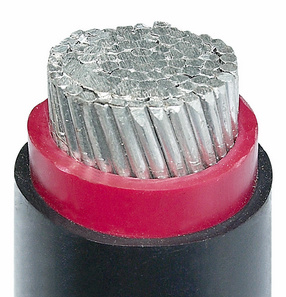 One of these service is often branded as "digital voice." Historically this seems to have come about to evade VoIP's unhealthy repute; within the early days of Vonage and the charmingly sketchy, again-of-journal-ad Magic Jack, VoIP merchandise usually delivered subpar service. Depending on the type of swap, the line card could carry out ADC and DAC to transform your analog native loop to digital signaling for additional dealing with by digital means. The many native loops that a class-5 or alternate swap serves terminate (within the case of fashionable digital change) at what are referred to as "line playing cards." The line card is accountable for managing all of the electrical aspects of a small set of local loops related to it. For the purpose of this text I'm mostly going to explain the state of a reasonably modern local loop, such as one linked to a 5ESS or DMS-a hundred digital swap. It's referred to as a loop as a result of the 2 wires, related at one end by the switch and at the other end by your phone, low voltage armored power cable allow present to stream all the way round. Or, it may join your local loop to a gadget called a hybrid transformer that separates your name into two pairs (one for audio every course) for further dealing with in analog type.
One of these service is often branded as "digital voice." Historically this seems to have come about to evade VoIP's unhealthy repute; within the early days of Vonage and the charmingly sketchy, again-of-journal-ad Magic Jack, VoIP merchandise usually delivered subpar service. Depending on the type of swap, the line card could carry out ADC and DAC to transform your analog native loop to digital signaling for additional dealing with by digital means. The many native loops that a class-5 or alternate swap serves terminate (within the case of fashionable digital change) at what are referred to as "line playing cards." The line card is accountable for managing all of the electrical aspects of a small set of local loops related to it. For the purpose of this text I'm mostly going to explain the state of a reasonably modern local loop, such as one linked to a 5ESS or DMS-a hundred digital swap. It's referred to as a loop as a result of the 2 wires, related at one end by the switch and at the other end by your phone, low voltage armored power cable allow present to stream all the way round. Or, it may join your local loop to a gadget called a hybrid transformer that separates your name into two pairs (one for audio every course) for further dealing with in analog type.

 The local loop is fundamentally two long copper wires that go directly out of your phone to the alternate. The FCC has begun to authorize abandonment of copper outside plant in major markets, and telcos are applying to perform such abandonment in more and more areas. For historic causes, phone switches are mostly body-optimistic. But I will definitely not describe both of those switches totally precisely. Ultimately the move to digital voice might be a good thing, as the abandonment of copper plant will kill off DSL in urban markets and make approach for faster choices---from telcos, normally PON. To make things extra confusing, it's not unusual for international phone standards to both be based mostly on older US practices that at the moment are uncommon in the US, or to have standardized on "in practice" properties of the US system as an alternative of nominal values, or to have mixed conventions from Western Electric with conventions from European phone manufacturers like Ericsson. In your own home, you've one or more telephones that you utilize to make and receive calls.
The local loop is fundamentally two long copper wires that go directly out of your phone to the alternate. The FCC has begun to authorize abandonment of copper outside plant in major markets, and telcos are applying to perform such abandonment in more and more areas. For historic causes, phone switches are mostly body-optimistic. But I will definitely not describe both of those switches totally precisely. Ultimately the move to digital voice might be a good thing, as the abandonment of copper plant will kill off DSL in urban markets and make approach for faster choices---from telcos, normally PON. To make things extra confusing, it's not unusual for international phone standards to both be based mostly on older US practices that at the moment are uncommon in the US, or to have standardized on "in practice" properties of the US system as an alternative of nominal values, or to have mixed conventions from Western Electric with conventions from European phone manufacturers like Ericsson. In your own home, you've one or more telephones that you utilize to make and receive calls.
Today, you might be allowed to buy and use your individual telephones. It actually just is dependent upon the machine, and most telephones will perform acceptably with well below 48v off-hook. Local loops are routinely in poor situation which throws issues out of spec anyway, and then subscribers use all kinds of bizarre telephones that are not at all times that effectively designed (the history of regulation of phone instruments could fill its own put up). Once your telephone loop makes it out of your cellphone, by way of your home wiring, down a drop cable, by means of an F2 cable, and then by way of an F1 cable, it arrives at the telephone exchange. When you complain, and the NID test shows the problem is on the telco aspect, they'll probably just resplice your house telephone service onto a unique pair back to the exchange. Together with the cellphone being your property (and thus your downside), the telephone wiring inside of your private home is your property (/drawback). Within the United States, all of the phone jacks in a house are connected in parallel.
It's actually fairly intentional that the electrical specs within the system are all tender targets. Many worldwide markets have way more detailed engineering specifications from unbiased bodies, however they're often based immediately on Western Electric's practices. Independent phone companies initially had to use totally different conventions than Bell because a lot of the Bell phone system was underneath patent; after the expiration of those patents they principally shifted to doing no matter Western Electric did to benefit from the prepared availability of compatible tools. There were some impartial organizations that promulgated telephone standards (such because the railroads which had their very own extensive phone plants), but they have been nearly at all times fully deferential to the Bell System. Today, I believe "digital voice" has mostly just become a part of price differentiation for service-supplied VoIP, since unbiased VoIP services tend to cost significantly much less. On consumer web connections, especially slower ones, digital voice continues to be more likely to be extra reliable than VoIP due to QoS policy. Still, there is some logic to differentiating digital voice and VoIP: because digital voice service is obtainable by the operator of the underlying IP network, it advantages from QoS measures that normal web site visitors doesn't. First, let's speak in regards to the very common architecture of an analog local loop.